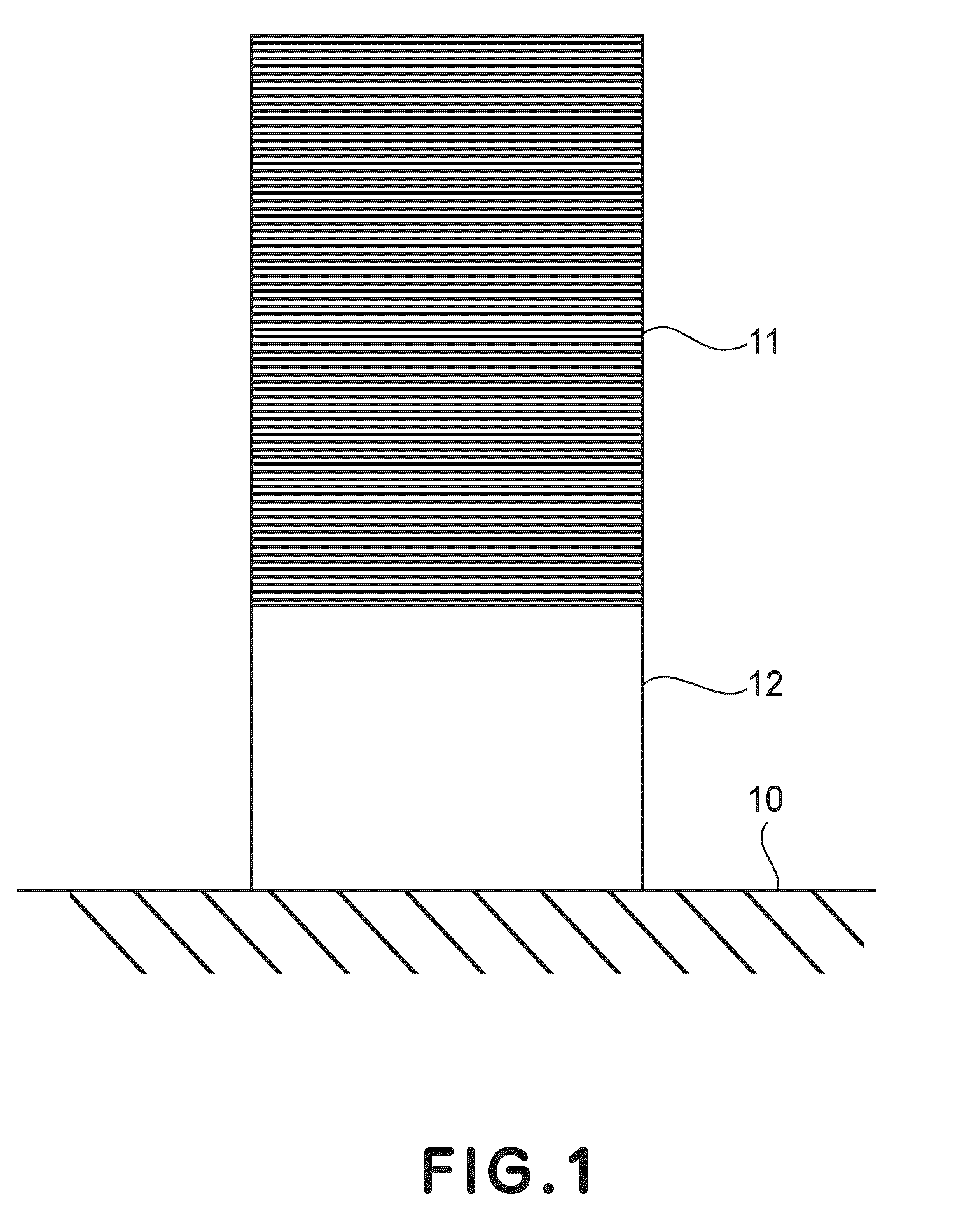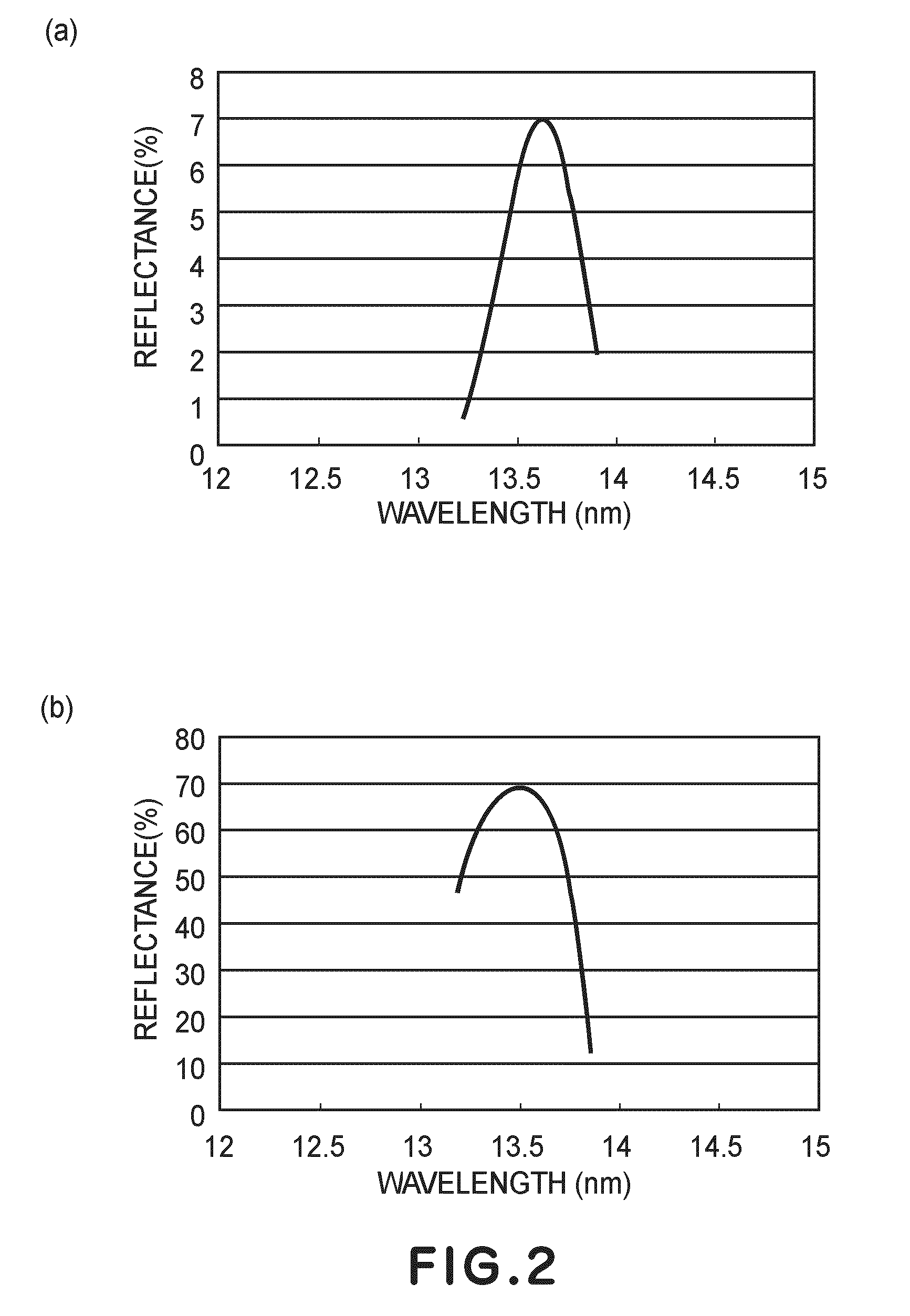Optical element for x-ray
a technology of optical elements and x-rays, applied in the field of optical elements for x-ray, can solve the problems of reducing lowering the optical aberration performance, and reducing the film stress, so as to achieve high optical performance and suppress the surface shape error
- Summary
- Abstract
- Description
- Claims
- Application Information
AI Technical Summary
Benefits of technology
Problems solved by technology
Method used
Image
Examples
embodiment 1
[0043]FIG. 1 shows an optical element for X-ray functioning as a reflecting mirror in an X-ray optical system in this embodiment. A first multilayer film 11 having a high reflection characteristic in a soft X-ray wavelength range is constituted by alternating layers of Mo / Si. A film having the same film structure as the first multilayer film 11 is formed on a test piece such as an Si wafer or the like and a surface shape of the test piece is measured before and after the film formation by an interferometer and then film stress is calculated from an amount of change in surface shape of the test piece and Young's modulus. As a result, the film stress of this multilayer film alone was −98.3 N / m2.
[0044]A second multilayer film 12 occupying a space between the first multilayer film 11 and a substrate 10 has a periodic structure which is formed by alternately laminating an Mo layer and an Si layer so that a unit period thickness which is a film thickness of a pair of Mo / Si layers is withi...
embodiment 2
[0050]FIG. 3(a) is a schematic sectional view showing a concave reflecting mirror for X-ray as an optical element for X-ray in this embodiment, wherein a substrate 20 is constituted by a known low thermal expansion optical material (“ZERODUR”) and has a curved surface 20a which has been subjected to optical polishing. On the curved surface 20a, a first multilayer film 21 as an upper multilayer film and a second multilayer film 22 as a lower multilayer film are formed as shown in FIG. 3(b).
[0051]The first multilayer film 21 has a unit period thickness H1 and is constituted by alternating films of an Si layer 21a and an Mo layer 21b. The second multilayer film 22 has a unit period thickness H2 and is constituted by alternating films of an Si layer 22a and an Mo layer 22b.
[0052]The substrate 20 is formed of the material (“ZERODUR”).
[0053]In order to determine a film forming condition when the first and second multilayer films 21 and 22 are formed, optimization of the film forming cond...
PUM
| Property | Measurement | Unit |
|---|---|---|
| thickness | aaaaa | aaaaa |
| thickness | aaaaa | aaaaa |
| thickness | aaaaa | aaaaa |
Abstract
Description
Claims
Application Information
 Login to View More
Login to View More - R&D
- Intellectual Property
- Life Sciences
- Materials
- Tech Scout
- Unparalleled Data Quality
- Higher Quality Content
- 60% Fewer Hallucinations
Browse by: Latest US Patents, China's latest patents, Technical Efficacy Thesaurus, Application Domain, Technology Topic, Popular Technical Reports.
© 2025 PatSnap. All rights reserved.Legal|Privacy policy|Modern Slavery Act Transparency Statement|Sitemap|About US| Contact US: help@patsnap.com



